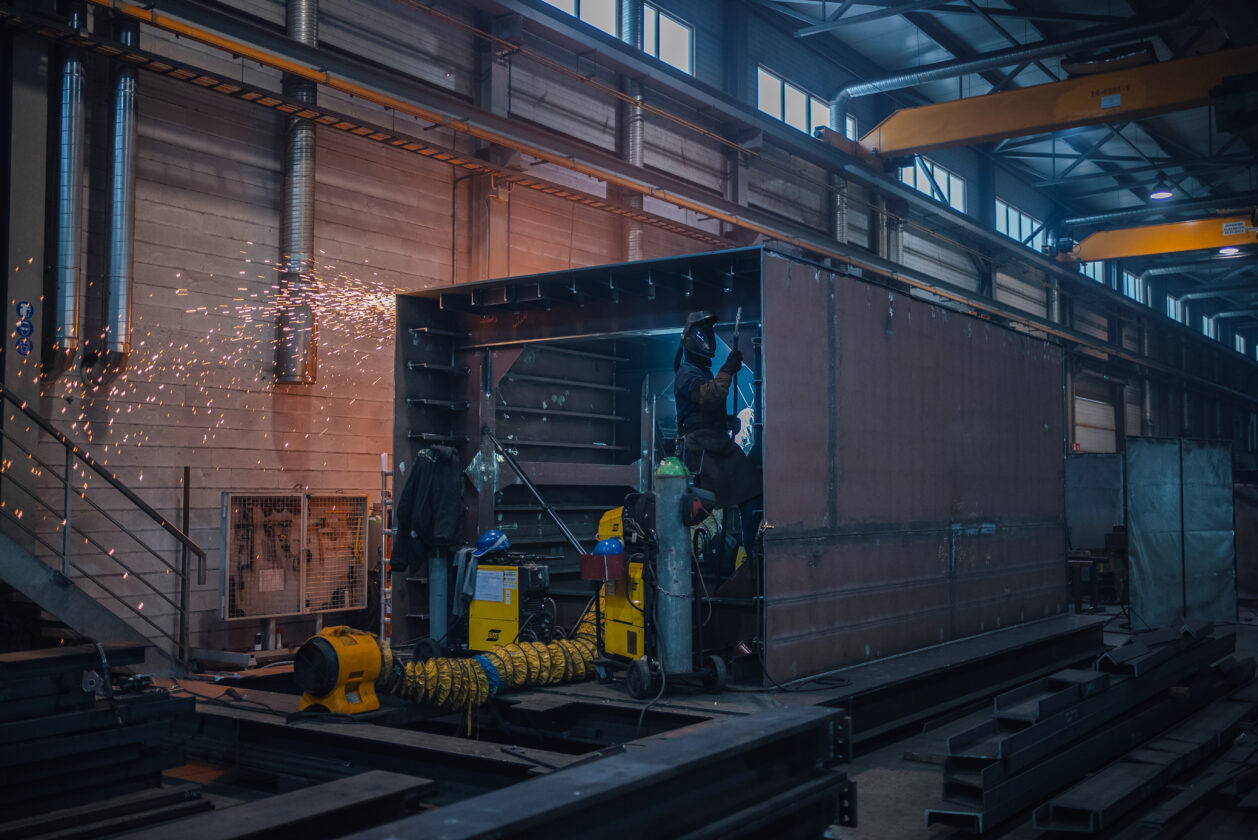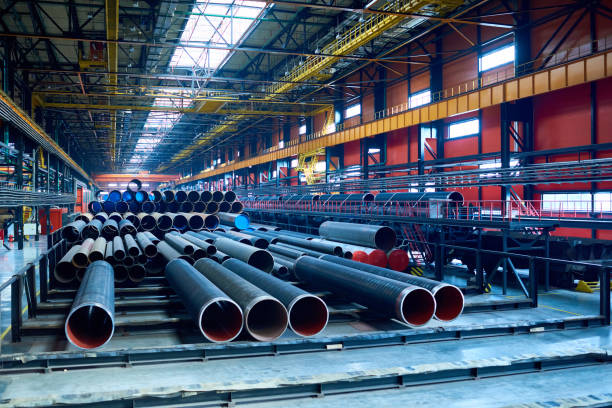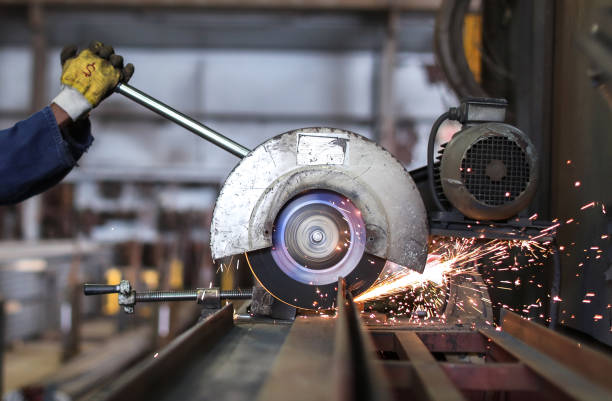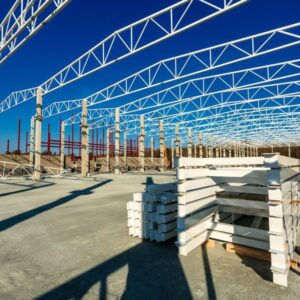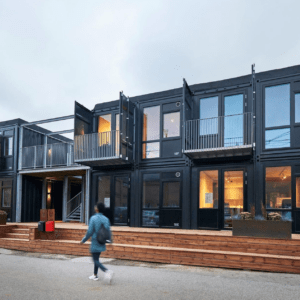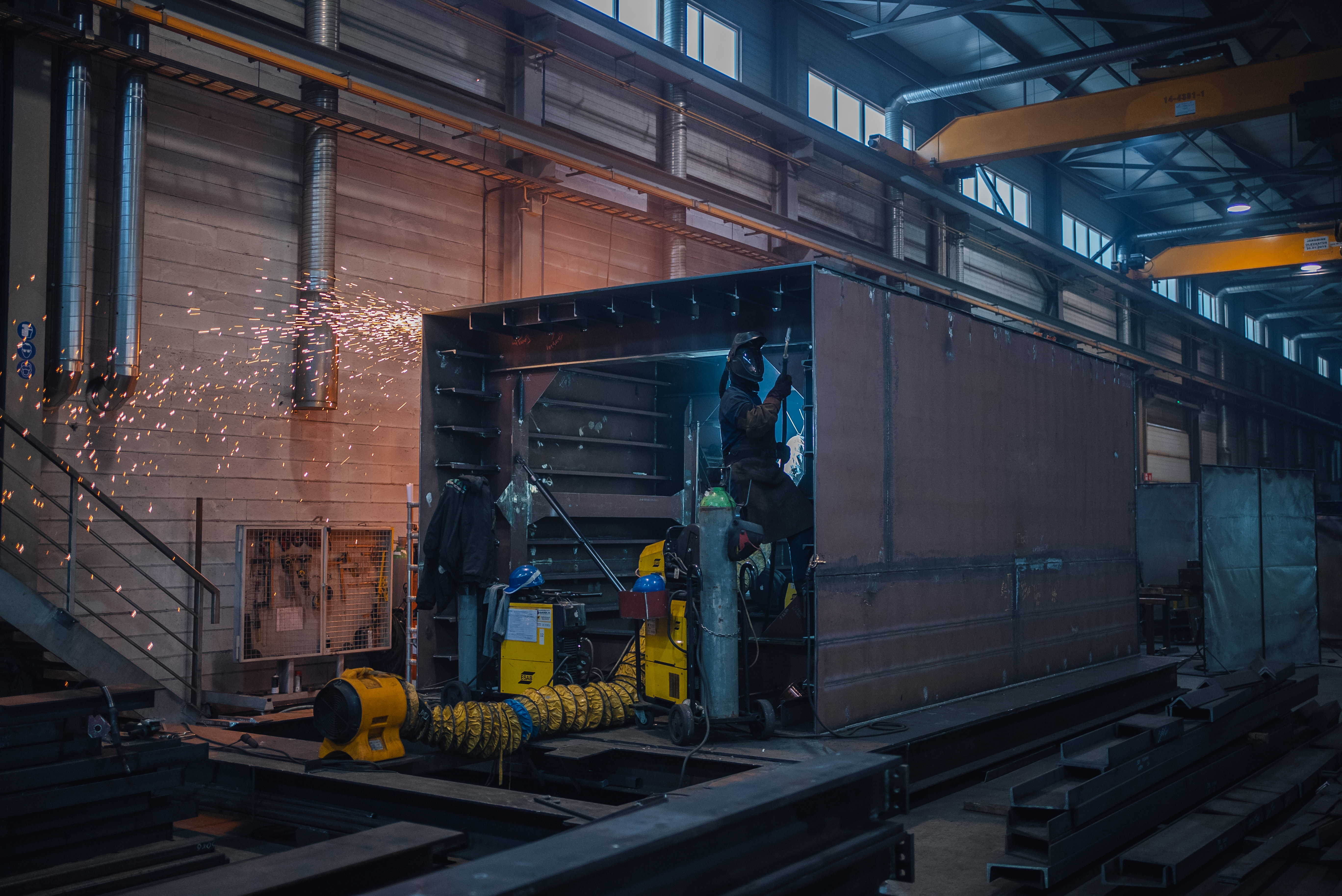Introduction to steel fabrication
Steel has been one of the most desired materials for a while now, and it has a plethora of different appliances. The impressive toughness and other factors are the reason why steel components are used in pretty much anything, from transportation appliances to structures or entire buildings.
In its nature, steel is an alloy of iron and other materials – and the abundance of materials that can be added into the alloy creates a wide variety of steel types, with their own downsides and benefits. As such, steel fabrication is the process of turning said steel into a specific shape – a process of transformation, for all intents and purposes.
Different parts of steel fabrication
There are three basic parts of steel fabrication – melting raw materials, mixing melted materials into steel, and forming the desired shape using said steel. The entire process is rather complicated, has little to no room for error, and requires a person of specific skills to operate it all properly. This process is widely used by steel fabricators to generate all kinds of steel parts and details, such as:
- Bar joists;
- Ladders;
- Grating;
- Skids;
- Universal beams;
- Pipe racks;
- Platforms;
- Universal columns;
- Industrial equipment, and more.
Steel fabrication is a process that can be performed using multiple different methods or approaches. Here are some of these methods:
- Cutting – there are several different methods that can be used to cut a specific part of a metal piece:
- Shearing is an alternative, as well, and it’s one of the simplest methods so far – the cutting process consists of placing a piece of raw material between two parts of the die, in which the higher part is called punch. By pressing punch to a raw material piece it is rather easy to separate a single material piece into several different, smaller pieces.
- Band saws are mostly used when it comes to cutting entire steel parts since shearing covers the majority of use cases when you need to cut steel plates or sheets. A band saw is either a hardened abrasive disk or a band that turns against the material piece in question and sizes it whenever it is needed.
- Cutter torches are also used quite commonly when it comes to cutting large cross-sectioned steel pieces. Their speed is impressive, but it does use extreme temperatures to perform the cut in the first place, so the cutting areas are treated as heat-affected zones.
It is worth noting that the cooling style for all the parts that have been cut with this tool does affect some of the properties that steel has, so it’s important to keep that in mind when choosing the cutting tool to use.
These torches can also be controlled by computers (CNC type) to speed up the process even more. Additionally, there is an alternative to this that uses a highly-focused laser to cut steel parts, and the cutter torch itself is mostly powered by natural gas as the energy source. - Water jet cutting is also an alternative to cutting torches, but at the same time, it offers no material distortion and can precisely cut practically any material using high-pressure water without the overheating problem that regular cutter torches have.
- Bending – a process of changing the shape of a steel piece by applying a massive force to it, it is usually done by either hammering works or with press machines. Press brakes and/or tube benders are used in the bending process to achieve the necessary angle of the steel piece. An extremely important factor that has to be considered when it comes to bending as a process is the amount of stress applied to the raw material since the excessive force is capable of deforming the material in question, which later requires additional operations to fix the problem.
- Welding – it’s a rather common method of steel fabrication that uses the fusion process to either combine or bend pieces of steel or other material. The fusion process is achieved by heating steel parts to an extreme degree, joining or bending them while they’re hot, and letting them cool. It is an extremely basic operation in principle. There are several different energy sources that can be used for welding as heat sources, but the most commonly used ones are lasers, electric arcs, and gas flame.
- Machining – the name of this process comes from the abundance of machinery that can be used to shave away metal parts to form a specific shape, using tools like drills, lathes, mills, and so on.
There are multiple shapes that the original raw material can exist in before the fabrication process, and the original shape needs to be taken into account by the person supervising the process. There are also several other processes that can be considered supporting in relation to the steel fabrication process:
- Steelwork erection;
- Surface preparation;
- Corrosion protection, etc.
One of these processes is considered far more important than any other, and that is heat treatment. Heat treatment as a process covers three different operations – soaking, heating, and cooling. There are even specific heat treatment mechanisms that help create finer grains for better properties of the steel itself.
Additionally, annealing can be used as a way to soften the steel, to make it more responsive and more capable of bending, if the original state of the raw steel piece prevents it from being shaped in a specific way without deforming. There are also several other operations that are performed on specific types of steel – and all of them fall under the umbrella of heat treatment procedures.
Steel fabrication supplies
The fabrication process’ capabilities are determined by two different factors – the equipment available and the software package. A lot of steel fabricators use cutting-edge technology to be able to provide the highest efficiency when it comes to the steel fabrication process.
Many steel fabrication processes are using an abundance of different materials and appliances to speed up the fabrication process, especially if your workers have constant access to a supply of materials that they need. Some of these materials are:
- Castings – help with speeding up the fabrication process in some cases, often used to generate more visual interest to the object of fabrication;
- Sectional metal – metal in a specific shape, some of the more common examples are Z shape, L shape, bar metal, and rod metal;
- Welding wire – extremely important tool for pieces that need to be welded together, and there are many different types of welding tools, as well;
- Plate metal – expands the capability of fabricators to shape the pieces in a specific way;
- Flat metal – capable of creating both texture and visual interest, flat metal (mostly plate and sheet metal) is a great choice for many types of fabrication processes;
- Expanded metal – a specific metal type (grate-like) that is required for outdoor furniture and other things that require moisture to not stay on the surface in question;
- Fittings – creation and completion of many pieces are dependent on these.
Fabrication shops and quality control
It’s quite common for products to be ordered in advance, which creates the need for steel fabrication facilities to specialize in making a specific part or detail. Such facilities are called fabrication shops, and they often focus on fabricating a specific part or model that they have the technical drawings for.
Fabrication shops can easily have several different machine types if those are needed for the fabrication process. The process itself utilizes both manual labor and machine work – it allows the demander to easily control the fabrication process and the number of pieces that get created. It’s all possible because a single fabrication shop performs an abundance of different production steps within a single facility so that it’s easier to control the process in the first place.
Quality control is a vital procedure for any steel fabrication provider, which is why the procedure of quality control exists for pretty much every fabrication shop out there. There are two main ways to approach quality control for steel fabrication – semi-automatic and manual.
There are also different techniques for specific problems, like leakage detection via non-destructive tests. Some of the more common non-destructive tests are magnetic, ultrasonic, and radiography. The surface in question must also be cleaned up thoroughly beforehand, and checked for welding fails to prevent disasters.
Steel fabrication engineering and design
Any steel fabrication company uses the fabrication design throughout the entire process, and having an understanding of a design in the first place is crucial for the whole process to be successful. The drawing itself must be comprehensible and complete, with all of the size markings added to it. The engineering part of it directly affects the quality of the product in question, including both the actual design of the piece, as well as the various production parameters, be it mechanical properties, or anything else.
Conclusion
As a steel fabrication company, Levstal offers a wide variety of steel fabrication services, with the ability to customize the details of each steel piece in accordance with the client’s wishes.
There’s strict quality control in place throughout the entire fabrication process, which makes the possibility of a mistake as small as possible. Additionally, the company offers an abundance of different features, including steel structure creation, sheet metal cutting operations, and more.
Levstal’s experience can be proven by their list of clients from all over the world, including Germany, Belgium, North America, Japan, and so on. Levstal supports the entire project’s lifecycle and keeps the client in the loop about all of the different parts of the process.


